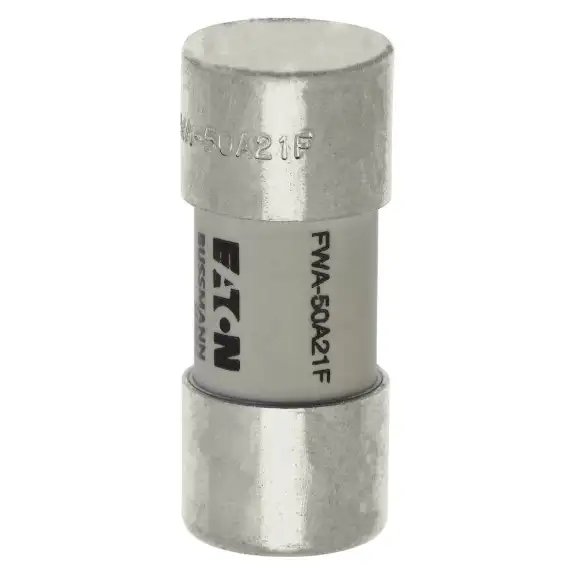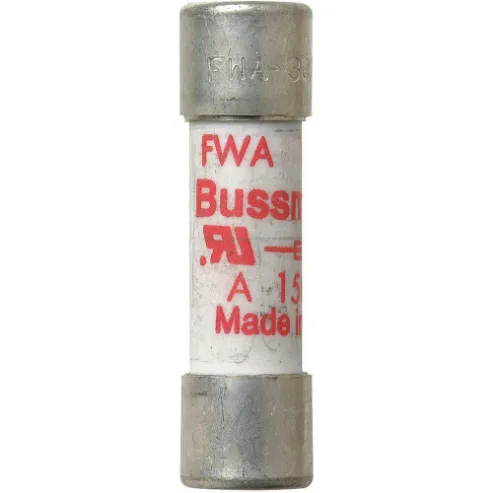Bussmann FWA-50A21F fuse is used in electrical settings for interrupting the fault current during overloads and short circuit conditions. This fast-blow fuse senses sensitive changes in the current flow and is occasionally coupled with an indicating fuse block or cover to enhance visibility and diagnostics.
Working Mechanism:
- In the occurrence of an overcurrent event, such as a short circuit or fault, the current coursing through the fuse element surpasses its designated capacity.
- The elevated current gives rise to heat within the fuse element due to the heating effect. As the element's temperature escalates, it draws nearer to its melting threshold.
- The fuse element, characterised by its low melting point, rapidly attains that temperature, triggering its liquefaction and engendering a break in the circuit. Subsequently, this gap induces an arc through the ongoing current flow across it.
- The arc produced by the melting of the fuse element turns ionised, generating intense heat. This heightened temperature accelerates the arc's extinguishing, and the ensuing gap promptly interrupts the circuit. This orchestrated course isolates the problematic section of the system.
- By interrupting the circuit within milliseconds, this fuse averts the potential of excessive current inflicting harm on delicate equipment, wiring, and components. This operation stands as a vigilant defender of the encompassing electrical system.
Features:
- It features a single-element design for rapid protection in medium voltage circuits.
- This high-speed fuse has a cylindrical body ensuring a seamless and secure installation.
- It has interrupt ratings of 100kA at 150VAC and 100kA at 150VDC for enhanced circuit protection against high current incidents.
- This fast-blow semiconductor fuse is made of melamine for structural rigidity and electrical insulation.
Compatible Accessories:
- Bussmann FP-3 Fuse Puller: This electrical fuse puller offers an extended reach to access confined spaces where fuses might be out of hand's reach. It maintains a safe distance between hands and wires, ensuring insulation against electrical shock hazards.
Frequently Asked Questions:
Q. What ae the factors to consider while selecting an appropriate Bussmann fuse?
A.
- Regular operational current
- Operating voltage
- Ambient temperature conditions
- Initial inrush currents
- Peak fault current
- Required duration for the fuse to open
Q. How can you check a fuse without a fuse tester?
A.
- Use wire strippers to remove around an inch of insulation from both wire ends.
- Connect one wire end to a fuse terminal and the other to the opposite terminal on the fuse.
- If the fuse is functional, the connected light bulb will illuminate.
- Conversely, if the fuse is malfunctioning, the light bulb will not light up.
Q. What is the main difference between fast-blow and slow-blow fuses?
A. The main difference lies in their response time to overcurrent events. Fast-blow fuses react very quickly to overcurrent conditions, breaking the circuit almost instantly. Slow-blow fuses, on the other hand, have a delayed response to allow temporary overcurrent conditions that might occur during normal operation without triggering the fuse.
 Change Country
Change Country

